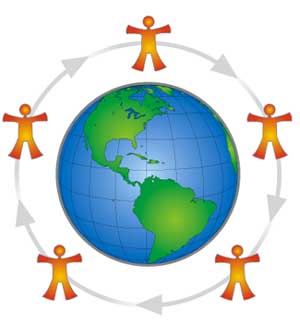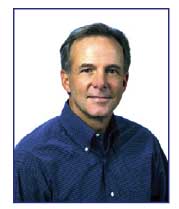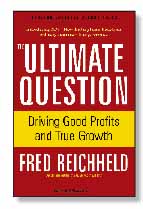 Harmonizing ISO/IEC 17024 Harmonizing ISO/IEC 17024
It's been three years since the release and widespread adoption of ISO/IEC 17024 by personnel certification bodies (PCB) around the world, and it hasn't been a walk in the park.
The standard, which is used by accreditation bodies and PCBs to standardize the quality and type of training and examination required of certified auditors (e.g., those who might perform the ISO 9001 audit of your company), has been plagued with every auditor's worst nightmare--different interpretations. PCBs and accreditation boards in different parts of the world differ in their interpretation of the standard's requirements that the PCB or accreditation body be "independent" and provide "quality" competency-based testing prior to certification.
"What we've found is that the definitions of 'independent' and 'quality' testing and assessment are different depending on where one is in the world," says Simon Feary, president of the U.K. accreditation body International Register of Certificated Auditors. "It's become a major problem for organizations like ours that operate internationally and see the problems that come up with all these differing interpretations.... Accreditation to ISO/IEC 17024 at the moment is a lottery and, as a personnel certification body, your chances of success are determined by location."
Countries with mature economies and long-standing accreditation systems have generally interpreted ISO/IEC 17024 to require a stringent assessment of certification candidates; emerging economies have allowed a far more relaxed assessment process. The result is certified auditors with untested and questionable skill sets, which has undermined the credibility of the standard and of personnel certification in general. The International Accreditation Forum formed a committee 18 months ago to examine ways of harmonizing differing interpretations of the standard's requirements, but it hasn't made much headway. Because some member organizations operate only in their home countries, they don't have any reason to promote international harmonization of ISO/IEC 17024.
Ron Swift, American National Standards Institute program director for personnel certification and accreditation, and chair of the IAF committee, reports that although the committee's progress has been slow, it has been steady. The committee performed a survey of certification and accreditation organizations in the approximately 25 countries that are implementing ISO/IEC 17024 and found "pretty clear" evidence of general confusion about two of the standard's requirements, according to Swift.
"The confusion is really about what, exactly, constitutes a fair and reliable certification scheme, and what constitutes a validated scheme," Swift says. "These are things we are working on, but this takes time. People have to remember that this is a very new standard, and it takes time for some concepts to settle and harmonize."
For some committee members, though, the harmonization process is taking too long. Describing it as a "last resort," members of the International Personnel Certification Association voted in August to create an "approval" body that will assess PCBs using its own harmonized interpretation of ISO/IEC 17024. The approval body will begin offering its services next September. Feary, whose IRCA is a member of the IPC, envisions the IPC's approval-body services working in tandem with the IAF's formal accreditation, though he acknowledges that the two might butt heads occasionally.
"Competition is a fact of life," he says. "No organization outside of government is free of it, and indeed it provides most organizations with the motivation to continually improve. I don't anticipate that the IPC sees any logic in going head-to-head with the IAF, but this is a serious issue that threatens our business, and if the IAF is unwilling to sort it out then we will have to."
"I would hope that [the IPC] would be patient and realize that creating more bodies that duplicate services might be confusing," Swift says. "When all is said and done, ISO/IEC 17024 will have a huge influence around the world. Services contribute more to the world economy than products do, and we have to have a way for countries to verify the right people to deliver those services."
For more information, visit www.iaf.nu, www.iatca.com or www.iso.org.
Do the Math
If the following is true, I have carpal tunnel, the left button on my mouse is completely shot, and UPS is on my doorstep every day.
Tell us why it's not true and win a cool prize. What's wrong with this story? No, it's not that 16.5 isn't twice as large as 9. We aren't that petty.
According to a January 2006 article in InformationWeek ("Google's Achilles' Heel," by Alice LaPlante), "Google has almost twice as many search ad clickthroughs as runner-up Yahoo. In December, Google had 16.5 trillion ad clickthroughs, compared with Yahoo's 9 trillion, according to Nielsen/NetRatings."
Send your answer to comments@ qualitydigest.com. Here's a hint: almanac. Get extra credit if you use Google's quoted ad prices and current earnings report. We will randomly select a winner from all correct entries to receive a truly useless gift of our choice (that's our choice) from woot.com.
Better yet, send us an example of math murder plucked from the headlines, lowlines, advertisements or your favorite innumerate newscaster. For a little extra fun, find innumeracy in a press release. We do something special with those. If we use your example, you will receive the hottest oddball item from woot.com. Send your asthmatic arithmetic example to comments@qualitydigest.com.
Quality Digest does not guarantee, promote or otherwise associate with woot .com. We simply use its unusual (and unusually cheap) offerings as shameless enticements to participate in our contest.
 Standardizing Independence Standardizing Independence
Serbia and Montenegro, the only two former Yugoslav republics that stuck together after the Balkan federation disintegrated during the 1990s, continued their march toward independence recently, as they received separate country codes from the International Organization for Standardization.
Montenegro announced its independence from Serbia in May, sparking a rather hectic effort to create its own government and infrastructure. There are more than 1,000 organizations registered to ISO 9001, ISO 14001, ISO/TS 16949 and ISO 13485 in the republics, and maintaining their registrations to those standards is an important part of building their separate economic bases. Accordingly, ISO assigned the Republic of Serbia its own country codes: RS and SRB; the Republic of Montenegro was assigned ME and MNE.
ISO will use the codes to identify the countries in its internal processes; they will also be used for machine-readable passports and electronic financial transactions.
For more information, visit www.iso.org.
 Six Sigma and Lean: Happily Ever After Six Sigma and Lean: Happily Ever After
According to recently performed research, lean and Six Sigma are destined for eternal togetherness.
The Avery Point Group, a national executive search firm that specializes in lean and Six Sigma, conducted a survey that found, for companies seeking Six Sigma talent, fully one-third are looking for practitioners with lean experience. For companies seeking lean talent, the desire is even greater for candidates who also possess Six Sigma skills. Almost half of all candidate seekers are looking for employees with both skill sets.
"When it comes to desired skill sets, companies want to have their cake and eat it too," says Tim Noble, managing principle of The Avery Point Group. "Even though companies may not have a full-blown Six Sigma or lean deployment underway, they highly desire talent that possesses both Six Sigma and lean skill sets as a part of a candidate's DNA. Continuous improvement practitioners on either side of the aisle might want to sit up and take notice that this wedding is clearly underway."
Noble also points out that publishing trends also illustrate the melding of the methodologies. Six years ago, books published on the combined use of lean and Six Sigma were virtually nonexistent. Today, they represent almost half of the lean books and a quarter of the Six Sigma books published.
"Those that perpetuate the divide between Six Sigma and lean are clearly missing the point," says Noble. "Core to both methodologies is the idea that challenges need to be approached with an open mind. True Six Sigma and lean practitioners will realize that these are truly complementary tool sets, not competing philosophies."
For more information, visit www.averypointgroup.com.
Quality Conversation
 William "Bo" McBee is vice president of total customer experience and quality for Hewlett-Packard and a newly appointed Baldrige Award judge. He was previously director of corporate quality at Armstrong World Industries, where he was instrumental in leading the company to a Baldrige Award in 1995. He has also been a judge for the Pennsylvania State Quality Award and the National Excellence in Service Award. McBee currently serves on the board of directors for the Quality Texas Foundation. Here, he discusses his quality philosophy and his thoughts on supply chain management. William "Bo" McBee is vice president of total customer experience and quality for Hewlett-Packard and a newly appointed Baldrige Award judge. He was previously director of corporate quality at Armstrong World Industries, where he was instrumental in leading the company to a Baldrige Award in 1995. He has also been a judge for the Pennsylvania State Quality Award and the National Excellence in Service Award. McBee currently serves on the board of directors for the Quality Texas Foundation. Here, he discusses his quality philosophy and his thoughts on supply chain management.
Quality Digest : What is Hewlett-Packard's quality philosophy? How is that philosophy carried into its employees' everyday duties?
William McBee: HP's quality philosophy has matured over the years to reflect the understanding that to fully satisfy our customers, we have to approach it from a total life-cycle experience point of view, much more broadly than quality of products and services. All points of interaction with customers are moments of truth that have to be managed and improved to secure the levels of loyalty we need to grow our business. This is why we have renamed our quality function TCE&Q, or total customer experience and quality.
QD : How can global companies like HP maintain strict quality requirements all along the supply chain?
WM: HP uses a variety of proven approaches to maintain strict quality requirements along our supply chain and our business value chains. First is maintaining various quality standards such as ISO certification and insisting that our production partners and suppliers do the same. We also have a variety of techniques that keep our requirements dynamic and relevant to the changing product technology and uses of our technology. For example, HP does installation audits and first-90-day experience metrics, and we take this information and adjust our testing and our quality requirements accordingly.
QD : Do you regularly tour manufacturing facilities' shop floors? What are you looking for when you do?
WM : When I tour manufacturing facilities, I look for a variety of things, top to bottom. I want to know whether and how management values quality, if it's taken seriously and drives continuous improvement. I also want to know some macro facts about the area, such as turnover, training and indicators of morale, the softer things that could affect quality. Specifically, I look for testing protocols and procedures because the computer and microelectronics industry has at times developed tests that can actually be destructive. I look at how facilities measure performance, and the measures and incentives upon which their people are assessed. Ideally, I like to see employees who know how they fit into the bigger picture and understand why what they do is important to the overall purpose of the facility.
QD : What do you like best about your job?
WM : What I enjoy most about my job is developing and executing strategies that result in outperforming our competitors, especially in areas that are important to our customers. TCE&Q can be a competitive weapon when targeted at the right areas and driven with passion. It's rewarding to my team to know that we have made it easier for our sales organization to compete because we have achieved an edge through our improvement efforts.
 Statistically Speaking Statistically Speaking
A recent study performed by the Aberdeen Group found that while 50 percent of respondents indicated that they have a Six Sigma program in place, just 16 percent of their programs met the methodology's stringent goal-based requirements for structured problem solving, dedicated training and project prioritization. Notably, the programs that did meet the requirements for Six Sigma attained an average of 40 percent more savings overall and 65 percent more savings per project than their less-structured peers.
View the full report at www.aberdeen.com/summary/report/benchmark/RA_SixSigma_3490.asp.
NPS: The Savior of Customer Satisfaction?
 That customer surveys are completely passé when it comes to measuring customer satisfaction is old news, but their absence has created a vacuum for organizations that need to know what their customers think. That customer surveys are completely passé when it comes to measuring customer satisfaction is old news, but their absence has created a vacuum for organizations that need to know what their customers think.
So what's a quality professional to do? Increasingly, some are turning to a new measurement tool called net promoter score (NPS), which uses one--that's right, one--question to measure customer satisfaction. A company's score can tell a lot about them, and results can be extrapolated to measure the effectiveness of just about any internal process.
NPS was developed by loyalty expert Fred Reichheld of Bain & Co. and Satmetrix Systems Inc. It asks, "On a scale of one to 10, how likely is it that you would recommend our company to a friend or colleague?" Responses are graded and divided into three categories: promoter, passive and detractor. Promoters respond to the question with a rating of nine or 10; passive customers are satisfied but not enthusiastic about the product or service, and give a rating of seven or eight; detractors give a rating of zero to six, are unhappy with the product or service, and will damage a company's reputation through word of mouth. The final NPS--which is often reflected in a percentage--is calculated by subtracting the number of detractors from the number of promoters.
"Promoters and detractors behave differently and generate fundamentally different economic consequences for the firm," says Reichheld. "Today's accounting systems camouflage this fact, but the best way to profitably grow is to get more promoters and fewer detractors."
The methodology appears to be catching on in the business world. GE Healthcare's chief quality officer, Peter McCabe, told BusinessWeek in January that he believes that NPS "Will be as big and long lasting for GE as Six Sigma was."
Other major companies appear to be catching on to the trend. GE recently announced that it plans to deploy NPS across more than 500 business lines and use it to determine executive bonuses. Satmetrix performed a survey that found that Apple Computers Inc., Google and Symantec Inc. rank particularly high with customers.
"People have a positive reaction when you say 'Google'," says Laura Brooks, Satmetrix vice president of research and business consulting. "It's a successful company that started out with a very creative model. And when you hear their CEO speak, you understand that they are focused on innovation in the next level."
Reichheld, the author of The Ultimate Question: Driving Good Profits and True Growth (Bain & Co., 2006), encourages companies to follow seven principles when calculating their NPS:
• Ask the ultimate question ("How likely is it that you would recommend our company to a friend or colleague?") and very little else.
• Choose a feedback scale that works and stick to it.
• Aim for high response rates from the right customers.
• Report relationship data as frequently as financial data.
• Use granular data to make employees more accountable.
• Audit to ensure accuracy and freedom from bias.
• Validate the score's link to behaviors.
For more, visit www.netpromoter.com or www.theultimatequestion.com.
Thanks!
Who says there's no brand loyalty left in the world? We at Quality Digest work hard to present interesting, well-written, informative and relevant articles month after month, year after year. From at least one indicator--our rates of long-term subscribers--we seem to be succeeding. Because this is our 25th anniversary issue, we'd like to thank some of our longest-term subscribers:
• Sharon Hay, Pennsylvania Department of Transportation quality coordinator, September 1989
• William Gorman, Day & Zimmerman Inc. quality manager, February 1990
• Dennis Schroeder, East Pennsylvania Manufacturing Co. Inc. quality manager, March 1990
• Rich Peterson, Astro Model Development Corp. vice president of business development, March 1990
• Scott Graber, Grimes Aerospace quality leader, March 1990
• David Steen, Santa Fe Rubber Products vice president of technology, April 1990
• Lyle Krohnberg, Viracon Inc. quality supervisor, August 1990
• Richard Biehl, Data Oriented Solution quality advisor, October 1990
• Kenneth Wood, Johnson Controls quality director, October 1990
• Lee Lipscomb, Southern Mills Inc. quality and technical services director, November 1990
Thanks, and keep reading!
|